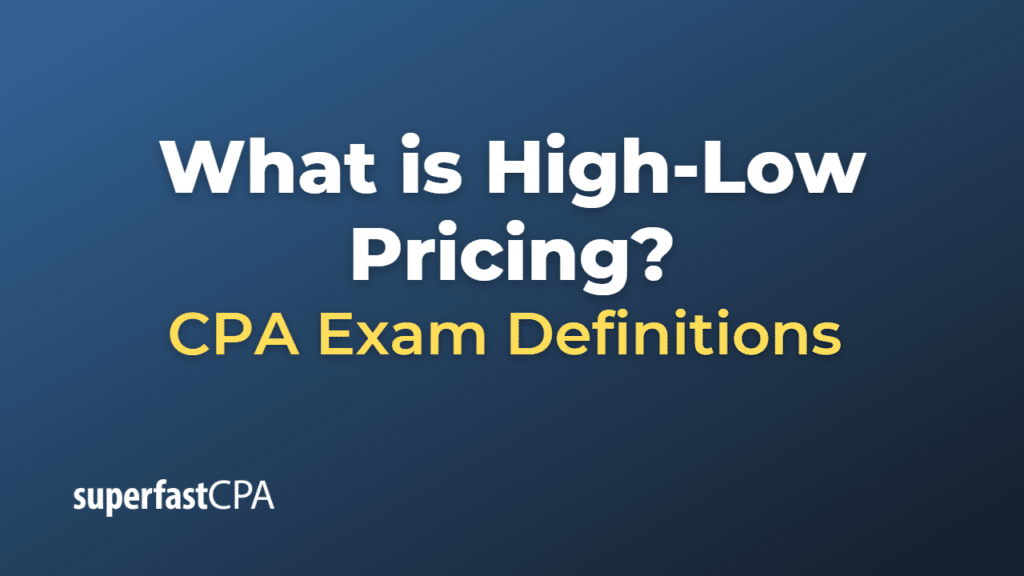High-Low Pricing
High-low pricing is a type of pricing strategy used by companies and retailers. It involves selling products at prices higher than the market average most of the time, but also occasionally selling them at a discounted or lower price. This approach can encourage a sense of urgency among consumers, motivating them to buy when prices are low.
High-low pricing can be seen in many different markets, but it’s perhaps most common in the retail sector, particularly with clothing, electronics, and groceries.
The idea behind this strategy is that the high prices enhance the perceived value of the product, making the discounted prices seem like a great deal in comparison. This perception of a good deal can increase sales volume during discount periods, while the higher regular prices can help maintain a healthy profit margin.
However, it’s worth noting that this strategy can lead to problems if not carefully managed. For instance, consumers might come to expect sales and delay purchases until items are discounted, or they might perceive the quality of the products to be lower if they’re regularly put on sale. This makes it crucial for businesses using this strategy to balance the frequency and depth of their discounts with their regular pricing.
Example of High-Low Pricing
Suppose there is a clothing store that regularly sells its designer jeans for $100. This is the high price, and it’s the one that the jeans are listed at for most of the year. To the customer, these jeans are seen as premium products due to their high price.
Now, suppose that the same clothing store holds a sale during the holiday season. During this sale, the jeans are discounted to $60. This is the low price, and it’s significantly lower than the regular price.
Customers who are aware of the regular $100 price may see the sale as a great opportunity to get a premium product for a much more affordable price. This could lead to a significant increase in sales during the discount period.
However, this strategy relies on the customers’ perception of the jeans as being worth $100. If the store were to discount the jeans too often, or by too much, customers might begin to question whether the jeans are really worth the higher price. They might even start to wait for the sales before making any purchases, which could hurt the store’s profits during the non-sale periods.
This illustrates the need for a delicate balance in high-low pricing strategies. Businesses need to maintain the perception of value at the higher price, while also making the discounts seem like a good deal.













